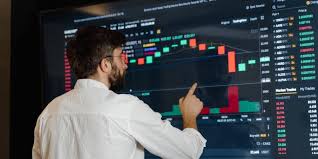
Mastering the Market: Exploring Crypto Trading Automation
The advent of digital currencies has revolutionized the financial landscape, offering opportunities for traders to automate their trading processes. The concept of Crypto Trading Automation https://gitlab.arcos.inf.uc3m.es/-/snippets/267 has emerged as a crucial tool for those looking to enhance their trading strategy efficiency. In this article, we will delve deep into the mechanisms behind crypto trading automation, its benefits, potential pitfalls, and the future it holds for traders of all levels.
The Basics of Crypto Trading Automation
Crypto trading automation refers to the use of software and algorithms to execute trades on behalf of the trader. It eliminates the emotional aspect of trading and allows for a systematic approach to the market. These automated systems can monitor the cryptocurrency markets, analyze trends, and execute trades based on predefined strategies. Traders no longer need to sit in front of their screens all day; instead, they can develop a trading algorithm that executes trades, allowing for efficient capital allocation and risk management.
Benefits of Automating Your Trading
There are numerous benefits to automating your crypto trading. Here are some of the most significant advantages:
- Emotion Control: One of the biggest challenges in trading is managing emotions. Automated trading systems operate on logic and predefined rules, reducing the likelihood of emotional decision-making.
- Backtesting: Traders can backtest their strategies on historical data to assess their viability before using them in real-time conditions.
- Consistency: Automated trading ensures that strategies are executed uniformly, maintaining discipline in trading practices.
- 24/7 Market Monitoring: Unlike human traders, automated systems can continuously monitor the market and trade opportunities that might arise at odd hours.
Challenges and Considerations
While the benefits of crypto trading automation are compelling, there are also challenges that traders should consider before diving in. Some common challenges include:
- Technical Failures: Automated systems rely on technology, and issues such as bugs, internet outages, or other technical failures can lead to significant losses.
- Over-Optimization: Traders can fall into the trap of over-optimizing their strategies based on historical data, which may not hold true for future performance.
- Market Volatility: The cryptocurrency market is notoriously volatile. Automated trading systems need to be designed to adapt to rapid market fluctuations and unexpected changes.

Popular Tools for Crypto Trading Automation
The market is flooded with tools and platforms that offer crypto trading automation. Here are a few popular options:
- Trade bots: Many platforms like 3Commas, Cryptohopper, and HaasOnline provide pre-built trading bots that users can customize to fit their strategies.
- API Integration: Advanced traders often use APIs to connect their trading strategies to exchanges like Binance, Coinbase, and Kraken, allowing for tailor-made solutions.
- Copy Trading: Platforms like eToro allow users to copy the trades of seasoned traders, automating the process while learning from successful strategies.
Building Your Own Automated Trading System
For those interested in creating their own automated trading systems, a few fundamental steps can guide the process:
- Define your strategy: Determine your goals, risk tolerance, and the type of trading strategy (e.g., scalping, day trading, swing trading).
- Choose the right tools: Select programming languages like Python or platforms like MetaTrader to build your trading system.
- Backtest: Rigorously test your strategy on historical data to ensure its reliability.
- Implement risk management: Incorporate features such as stop-loss orders to protect your capital.
- Monitor and refine: Continuously monitor your automated trading performance and make necessary adjustments as conditions change.
The Future of Crypto Trading Automation
As the cryptocurrency market continues to evolve, so does the technology behind trading automation. The future will likely be characterized by increased integration of artificial intelligence and machine learning in trading strategies. These technologies can process vast amounts of data and gain insights that may not be apparent to human traders. Additionally, the development of decentralized finance (DeFi) may lead to more opportunities for automated trading as smart contracts become more prevalent in executing trades automatically without the need for intermediaries.
Conclusion
Crypto trading automation represents a significant leap forward for traders eager to gain an edge in the fast-paced world of digital currencies. While there are challenges to navigate, the advantages of emotion-free, consistent, and efficient trading make it an appealing option for both new and seasoned traders alike. By understanding the tools available and the mechanics behind automated trading strategies, you can position yourself for success in the ever-evolving cryptocurrency market.
